Street box for the electric meter: requirements and features of the choice and installation of the electrical panel
Owners of private households will sooner or later have to take out utility meters to the street. Service organizations have a number of requirements for this event. One of them is the corresponding item of the PUE, according to which the shield is installed on the facades of houses, poles, poles, fences, etc.
We will talk about how, according to building codes, to locate and secure a street box for an electric meter. The article we have proposed describes in detail the selection criteria and the rules for installing a box for a flowmeter and other equipment. Useful recommendations are given for the assembly of the shield and the installation.
The content of the article:
Purpose of street boxes
The box must perform three functions. The first is to ensure the safety of people during maintenance and operation of the power grid. Boxing is necessarily grounded.
The second is to create optimal conditions for devices located inside. The design should be well protected from atmospheric influences: moisture, sunlight, wind.

The third is to provide access to the meter to representatives of the service organization. This condition is spelled out in contracts with consumers, although there is no direct requirement in the PUE to install meters on the street.
Varieties of drawers by type of construction
Foreign and domestic manufacturers offer boxes of different sizes and capacities. The option is selected depending on the parameters of the equipment that is planned to be placed in the box.
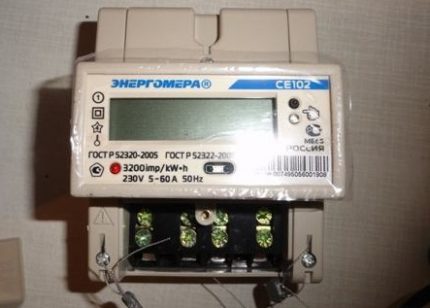
There are certain markings that suggest the type, purpose of boxing. Example:
- SCHU - ordinary and easiest;
- ShchVR - built-in drawer deep into the wall;
- ShchRN - distribution hinged box.
If this is just a metering panel, it usually houses only a counter, an input circuit breaker, ground buses and zero. Residual Current Devices, and circuit breakers installed in the "home" box. But you can combine all this in one box.
The design of the shield can be:
- outdoor;
- built-in;
- waybill or hinged;
- hidden or open;
- integral or collapsible.
What equipment, in what quantity and with what parameters should be installed in the box - all these points are prescribed in the project power supply of a private house. If there is no such document, consultation of specialized specialists is needed.
The main criteria for choosing a box
The main task of the consumer is to find a durable, practical box that can withstand long-term service in outdoor conditions. The box should be convenient for installation and operation.
What is important in the design itself? The presence of holes of the corresponding diameter for the wires that go from the support and are displayed on the building. It is desirable that these elements have sealing gum and plastic couplings.
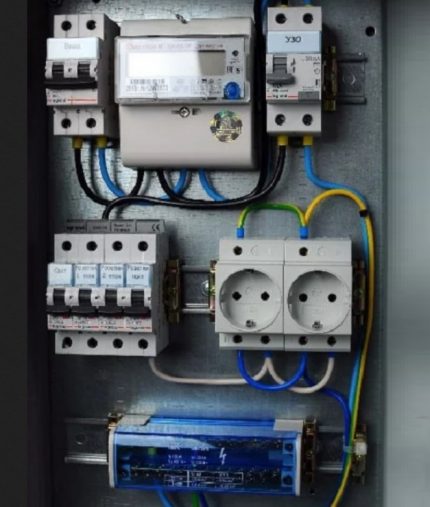
A convenient detail is a window. It eliminates the need to open the shield for taking readings and reduces the frequency of contact of the internal contents with air, moisture. Pay attention to the ears for sealing.
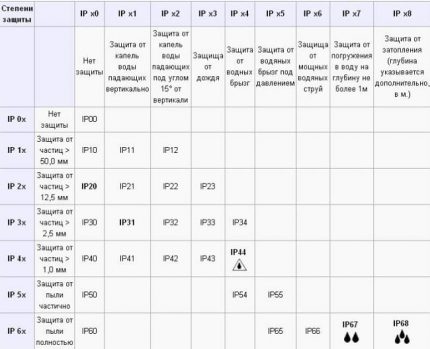
The IP20 index means that the box is protected from dust particles over 12.5 mm, but is defenseless against moisture. Degree of protection IP65 guarantees complete isolation from these negative factors. The higher the number, the more expensive the design. The best option is with an indicator of 54.
When choosing an electrical panel, you also need to look at the thickness of its walls, the range of operating temperature, the number of wings, the type of lock. The box can be closed with one individual key or be equipped with several identical keys.
Boxing Installation Requirements
The meter and additional equipment may only be installed in a sufficiently rigid structure. It must be well insulated from moisture and other negative atmospheric effects.
Counters with significant temperature differences can give errors in readings, therefore it is recommended to insulate the box with special caps or heating elements. This will extend the life of the devices.
Key Points PUE-7:
- The distance between the floor and the box with the meter clamps should fall in the range of 0.8-1.7 m. The deviation of the first indicator up to 0.4 m is allowed.
- If the placement is accessible to unauthorized persons, the box must be equipped with a reliable lock and a viewing window.
- The design and dimensions of the cabinet should provide easy access to all elements of the installation and the ability to replace devices, if necessary.
- During installation, the ends of the wires from 12 cm must be left near the meter. The length of the zero wire at a final length of 10 cm should have a distinctive color.
- Mandatory grounding with copper protective conductors.
- Wiring must not have adhesions.
- Verification terms: for three-phase meters - 1 year, for single-phase - 2 years.
In addition to the requirements for the counters and boxes themselves, the rules also apply to cables, wires, fasteners. For multi-core cable, the use of NShVI (lug) is mandatory. When attaching the ends of the cables to the equipment, pressure glands (glands) are also needed.
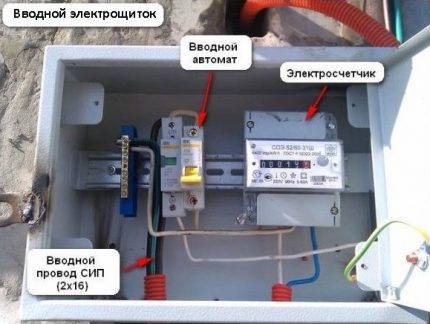
DIY cabinet
If you have experience and desire, you can arrange a cabinet for an electric meter yourself.You will need to buy the design itself, arm yourself with the necessary tools and spend electrical panel assembly in accordance with the specifics of the home electrical network.
If you come across a cabinet of the required dimensions, but it does not have a window, ears for fillings or any holes, these elements can be added. But the work must be performed in accordance with safety regulations and the requirements of regulatory organizations.
All necessary equipment is mounted on DIN rails. With many models of metering devices, parts that can be useful during installation (stickers, caps, fasteners) are supplied. The main task is to assemble the devices and combine them correctly.
Outdoor Meter Models
If you buy a new meter, and do not take out the existing one from the room, you need a device suitable for use in outdoor conditions.
Pay attention to the following points:
- Induction models are much more sensitive to temperature extremes than electronic ones.
- DIN rail as a mounting method is preferable.
- Go to the website of the electricity sales organization and see which models are allowed for installation in Russia.
- For a multi-tariff payment system, choose a device that can take into account more than three tariffs.
Brand awareness and the availability of service centers also matter. A trusted manufacturer means quality, maintainability, and loyalty of inspection organizations.
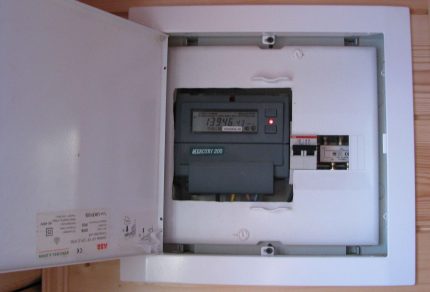
Of the domestic brands available for sale, the following can be considered: INCOTEX, Taypit, Energomera, EKF. Especially popular is such a model as the "Mercury" 230 AM-03. It is single-rate, capable of giving accurate readings in the temperature range from -40 to +55 degrees.
From foreign manufacturers have proven themselves well: the Swedish-Swiss ABB, French Schneider Electric, Turkish Legrand. But European brands often have a temperature range that does not correspond to Russian realities.
It is advisable to consult with specialists from a service organization in your area. Usually they have a list of devices that have already shown their best side during operation.
Automatic and heater
A circuit breaker is installed in the box to the counter. Its parameters need to be calculated from the total capacity of all consumers - electrical appliances installed or planned in the house and on the street / in the garage and other household buildings.
If, for example, the total power is 25 kW, then a 63 A. Using the latter, the readings are automatically transferred to the processing center. But such a scheme can not do without a heater.
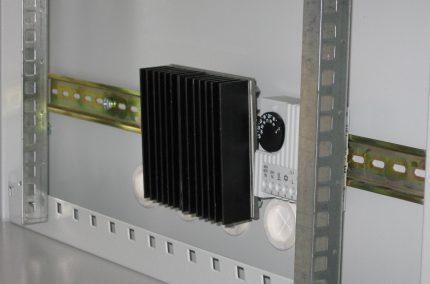
Heaters for electrical panels are made of aluminum, which is coated with non-combustible thermoplastics.
The main functions of the element are to prevent the formation of condensation, which prevents corrosive changes in current-carrying tires, contacts and protects devices from high humidity.
Reserve input device and SPD
If the electrical installation has an autonomous power source, after the counter, you need to install a reserve device. This device is needed to manually switch consumers from the external network to the generator and vice versa.
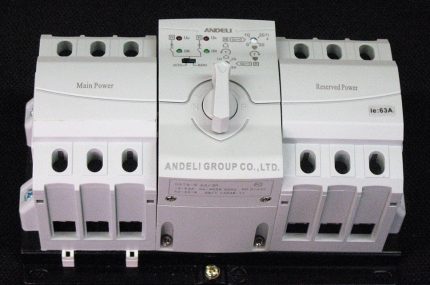
To protect the installation from lightning strikes, high-voltage surges and fires from these effects, an SPD (surge protection) is added to the shield. It is placed after the opening machine and through a separate fuse. An SPD is required if entering the building is by air.
Additionally, the shield can be installed fire protection RCD, a cross-module for the distribution of electricity among different consumer groups. Sometimes a differential machine is added to the box.
An outlet is one of the optional items. But if you are just under construction on the site or you need a street connection for some equipment, you can not do without it. And do not forget about the zero rail, it combines all the zero cables and is used for switching cores.
How is the installation carried out?
The connection of all equipment should be done by an electrician, provided that he has the necessary documents for such work. The owners of power lines have such specialists. Inviting someone else or doing everything yourself is impractical.
Unskilled craftsmen may not compare the technical characteristics of the input equipment with the actual loads on the network, “forget” about devices for protection against electric shock, or even make gross errors in the sequence of their connection. Therefore, to know how the installation is carried out is highly desirable.
First, an input device is equipped - this is the cabinet itself, where there are mechanisms for protecting and connecting incoming cables to outgoing ones. It is good if the pipe with the cable enters directly into the box itself. Consider the connection process using an example with a three-phase network.
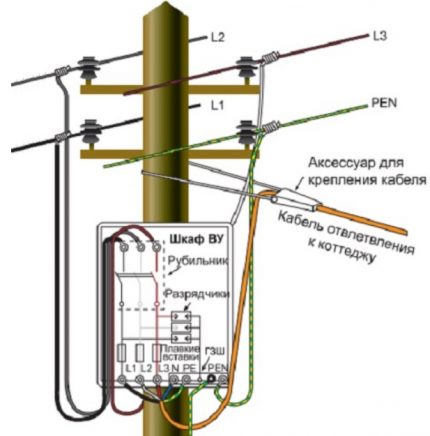
There are a lot of knife switches on sale, one three-pole automatic machine, which can be moved outside the input device, is suitable. One of such designs is YaBPVU-100. This is an iron box with NC contacts and 100 A fuses.

The most important element of the input device is the grounding bus, to which re-grounding with a zero incoming conductor is connected. It splits the PEN conductor into a ground wire and an outgoing zero. Further, the cable from the box goes to the house where its shield is installed.
Zero splitting can occur in the input device itself. In this case, the shield will be called the input distribution.
If street wiring is excluded, a special tap can be made from the main shield. So devices designed for three-phase power will have separate machines, RCDs.
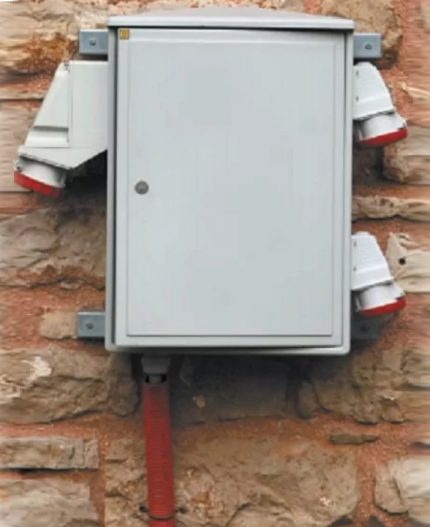
The equipment is connected via power plug connectors or boxes with tires. The degree of protection should be greater than or equal to IP45.
How to assemble and install the shield for the counter in the apartment is described in detail in next article, which we recommend to familiarize with the owners of urban housing.
Conclusions and useful video on the topic
Video # 1. Assembly of all boxing elements before installation:
Video # 2. Assembling and installing a three-phase meter instead of the old single-phase meter, plus an estimate of such work:
Video # 3. Analysis of the process of connecting electricity from the support (pillar):
To install a box for an electric meter on the street, you need to choose the box itself and its internal equipment so that the design and devices can withstand external conditions. You can assemble the shield yourself, but it is better to entrust all connections from the support to the house to the master from the service organization.
Want to talk about how to assemble and install an electrical panel on the street in front of your own summer house or country house? Do you have technological subtleties that are worth sharing with site visitors? Please write comments in the block below, ask questions and post a photo on the topic of the article.

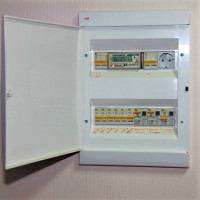 Box for an electricity meter in an apartment: the nuances of the selection and installation of a box for an electric meter and automatic machines
Box for an electricity meter in an apartment: the nuances of the selection and installation of a box for an electric meter and automatic machines 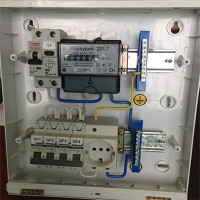 Connection of a single-phase electric meter and automatic machines: standard schemes and connection rules
Connection of a single-phase electric meter and automatic machines: standard schemes and connection rules 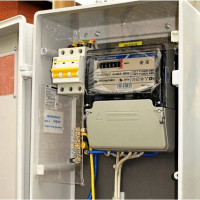 Replacing an electric meter in an apartment and in a private house: the specifics of replacing a meter
Replacing an electric meter in an apartment and in a private house: the specifics of replacing a meter 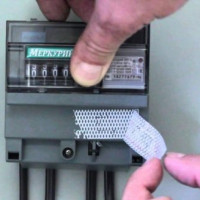 Antimagnetic seal on the electric meter: principle of operation and specifics of use
Antimagnetic seal on the electric meter: principle of operation and specifics of use 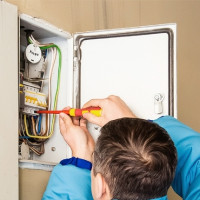 How much does it cost to change an electric meter: the cost of replacing an electricity meter in an apartment and a private house
How much does it cost to change an electric meter: the cost of replacing an electricity meter in an apartment and a private house 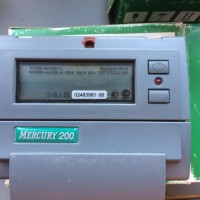 How does a two-tariff electricity meter work and is it profitable?
How does a two-tariff electricity meter work and is it profitable?  How much does it cost to connect gas to a private house: the price of organizing gas supply
How much does it cost to connect gas to a private house: the price of organizing gas supply  The best washing machines with dryer: model rating and customer tips
The best washing machines with dryer: model rating and customer tips  What is the color temperature of light and the nuances of choosing the temperature of the lamps to suit your needs
What is the color temperature of light and the nuances of choosing the temperature of the lamps to suit your needs  Replacement of a geyser in an apartment: replacement paperwork + basic norms and requirements
Replacement of a geyser in an apartment: replacement paperwork + basic norms and requirements
At the very beginning of the text, the statement is made that the meter must be taken out of the house. What purpose? Is this someone's requirement? I often have to go to the private sector, but have not seen anything like it. But suppose we still take the device out to provide controllers with free access to it. But by this we also provide free access to various marginalized people?
Formally, the requirement to install an electric meter on the street is illegal and if you really want to “fight” with power engineers, you have the right to refuse, but be prepared for the courts.
And what prevents you from putting an electric meter in a box inside your section, behind a fence, where the outcasts whom you fear will not crawl?
You were correctly written that you can sue and force power engineers to abandon requirements. But how much it will take nerves and time.
No nerves will go away. I’ll answer immediately to Anton too. There will be no trial, by the way, either. There can only be recommendations, and not requirements for the removal of the electric meter.
Clause 1.5.27 of the PUE states that:
“The meter should be mounted in an easily accessible place for maintenance with a temperature in winter of at least 0 deg. C.
It is allowed to place meters in unheated rooms and corridors of switchgears of power plants and substations, as well as in cabinets of outdoor installation. At the same time, their stationary insulation for winter time should be provided for by means of warming cabinets, hoods with heated air inside them with an electric lamp or heating element to ensure a positive temperature inside the hood, but not higher than +20 degrees“.
P. 1.5.29 of the PUE: “Permissible meter mounting height is in the range from 0.4 to 1.7 m from the floor“. That is, this height is easily accessible for thieves and vandals.
In connection with these standards, it is difficult for the owner to ensure the safety of the meter. Although, Art. 210 of the Civil Code of the Russian Federation states that: “The owner is responsible for the safety of his property, unless otherwise provided by the contract“.
In connection with these paragraphs, there is no law on the obligation to take out the meter, it cannot exist, and the right to demand this does not exist at the resource supplying organization. If someone obliges you, simply request a regulatory act established at the legislative level. An interesting practice is the SNT, where allegedly by the general meeting they try to oblige someone that all the owners take out the meters. And often, people peck at it, although in this case, you have every right to refuse to take out the counter.
Good afternoon, Anton, other discussion participants.
Power engineers have the only goal - the availability of the meter for controllers at any time of the day.Attempts to mount street metering boxes at an affordable height recommended by the PUE encountered Russian evidence of the consequences - the devices were broken and stolen.
Today, power engineers have begun to mount special meters near the head-ends of the 0.4 kV overhead lines. To read the testimony, the owners are given remotes that “see the numbers” even from the window of the house — they recorded the testimony on the settlement day and handed it to the power supply organization. Among the examples of innovations are Orenburg, Tver, and many other cities. By the way, installation in Orenburg is free.
I watched as the Orenburg Energosbyt T + controller took readings using a laptop - Wi-Fi is working. I attached a photo of such a counter.
And where is the point from PUE 7 section 1., chapter 1.5, paragraph 1.5.27 - box heating? Probably a big sclerosis. Where does the condensate that forms when the temperature drops, which leads to damage to the electronics go? And who is responsible for the integrity and serviceability of MY equipment installed on the STREET? Uncle? Or put on guard?
Hello. Not an uncle or a guard, if you haven’t entered into such an agreement with them, but by law it’s you who are responsible for your ISP. Of course, we fully understood your sarcasm, now about your indignation ...
The article is not written with a recommendatory nature about installing an meter on the street, but for those who install such meters voluntarily and at their own request. This usually happens to those who do not stay at home for a long time, work hard and the controller cannot find anyone at home, or simply does not tolerate strangers with a mandatory check on their territory. To avoid fines, often this option is very convenient.
Hello! My question is - we have an electric meter in our house, which we use. The energy sales company installed its meters on the poles on the street. Our actions? Carry remote controls and distribute to residents. Is all this legal?
Hello. Please familiarize yourself with the Federal Law of December 27, 2018 N 522-ФЗ “On Amending Certain Legislative Acts of the Russian Federation in Connection with the Development of Electricity (Power) Metering Systems in the Russian Federation”.